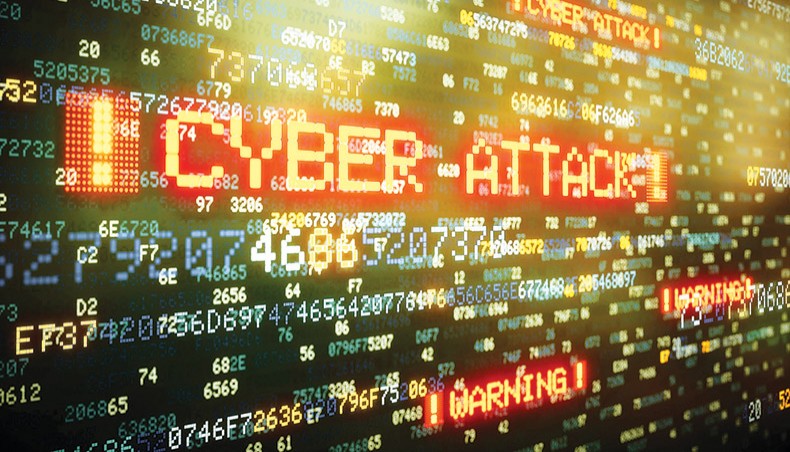Rabeya Islam Rima

CYBER security plays an important role in the field of technology, but securing information has become one of the biggest challenges in the present world. In this modern world, everything depends on various technologies. Billions of people worldwide rely on technology for their data-related activities. In today’s interconnected world, the vast majority of countries rely on technology for data management, communication and others. It would be challenging to pinpoint exact numbers, as almost all countries integrate technology into their industries and public services. As a result, cyber security challenges are increasing day by day.
According to the US Department of Justice, it expands the definition of the main cyber security challenge of cybercrime to include any illegal activity that uses a computer for the storage of evidence. According to reports, around 236.1 million ransomware attacks occurred globally in the first half of 2022. One in 10 US organisations has no assurance against cyber-attacks. It globally increased by 125 per cent in 2021 compared to 2020, and increasing volumes of cyber-attacks continued to threaten businesses and individuals in 2022. In Asia, organisations suffered the most attacks worldwide. The UK had the highest number of cybercrime victims per million internet users at 4,783 in 2022, up 40 per cent over 2020 figures. In 2021, there was an average of 97 data breach victims every hour worldwide.
In modern society, cyber-attacks are increasing exponentially. The main reason can be said to be that it is convenient and less risky than physical attacks with the expansion of cyberspace. Cyber threats are growing day by day. It is becoming more powerful and creating more challenges too. To define that, we can see some notable cyber-attacks, such as the Stuxnet worm (2009–2016). This attack is a computer worm that is widely believed to be a joint US-Israel cyber weapon. It specifically targeted Iran’s nuclear programme, damaging centrifuges used for uranium enrichment. Another cyber-attack was the Wonna Cry ransomware in 2017. This attack affected over 200,000 computers across 150 countries. It exploited a Windows vulnerability and demanded ransom payments in bitcoin. This incident highlighted the global reach and impact of ransomware on affected organisations like the NHS in the UK. Equifax Data Branch, one of the major credit reporting companies, suffered a massive data breach that exposed the personal information of nearly 147 million people. The incident highlighted the vulnerability of a large database and the importance of protecting sensitive personal data. Another example of a dangerous cyber-attack is AP (cosy bear). It is believed to be associated with Russian intelligence. It has been involved in various cyber-espionage campaigns globally. It has targeted government organisations.
In the modern world, there are uncountable companies and organisations. In the evolving landscape of the corners, modern business organisations find themselves not only at the forefront of innovation but also in the crosshairs of relentless cyber threats. The most common cyber-attacks faced by companies can be based on factors such as industry region and technological infrastructure. Some of the most common cyber-attacks, such as phishing attacks, ransomware attacks, business email compromises, credential suffering, and malware attacks, are faced by all the companies in the world. Some attacks, such as the Play Station network, were breached in 2011. The passwords and information of 70 million users were hacked. In 2014, Sony Pictures Entertainment was hacked, which has been linked to state-affiliated North Korean hackers. In 1982, a hacker called Kevin Mitnick hacked the North American Defence Command, an achievement that inspired the 1983 film War Games. In 1989, he hacked Digital Equipment Corporation’s network and made copies of their software.
Cyber-attacks on companies can have various consequences, including data breaches, financial losses, damage to reputation, operational disruptions, and more. These types of cyber-attacks lead a company to downfall and lose its prestige. One of the primary consequences is the compromise of sensitive data, such as customer information, trade secrets, or financial records. This can result in identity theft, fraud, or unauthorised access to proprietary information, harming both the company and its stakeholders. All these companies lose their clients, which leads to huge financial losses. Ultimately, the multifaceted landscape of cyber-attacks poses significant threats to organisations globally.
Cyber security indeed poses a significant challenge in individuals’ lives as our reliance on digital technology continues to grow. Several aspects contribute to this challenge, including personal data protection, device vulnerabilities, and more. Millions of people are suffering for cyber security around the world. Cybercrime statistics show that a minimum of 422 million individuals were impacted, according to the FBI’s internet crime records, with 800,944 complaints registered in 2022. According to certain industry studies, cyber security professionals estimate that more than 800,000 people experience ransomware attacks, phishing attacks, or data security breaches each year.
Today, we use different types of devices for all our daily activities. From personal life to professional life, we share every piece of information in the internet world. According to the International Telecommunication Union, approximately 60–65 per cent of the global population is estimated to have internet access. But how secure is the information we are giving in the internet world? Maybe none of us have the answer to this question. For example, if we upload almost every moment of our daily lives to Facebook, what will happen to us if Facebook gets hacked? If they fall into the hands of an unexpected person, various unexpected events can happen in our lives.
Various measures are taken to protect us all from these unexpected events. There are different types of management to secure every area of the internet. The number of cyber security professionals globally stood at 5.45 million, up from 4.6 million in 2022. A variety of organisations and governments in almost every country are working on this issue. But still, ensuring cyber security is a great challenge for the modern world.
No comments:
Post a Comment